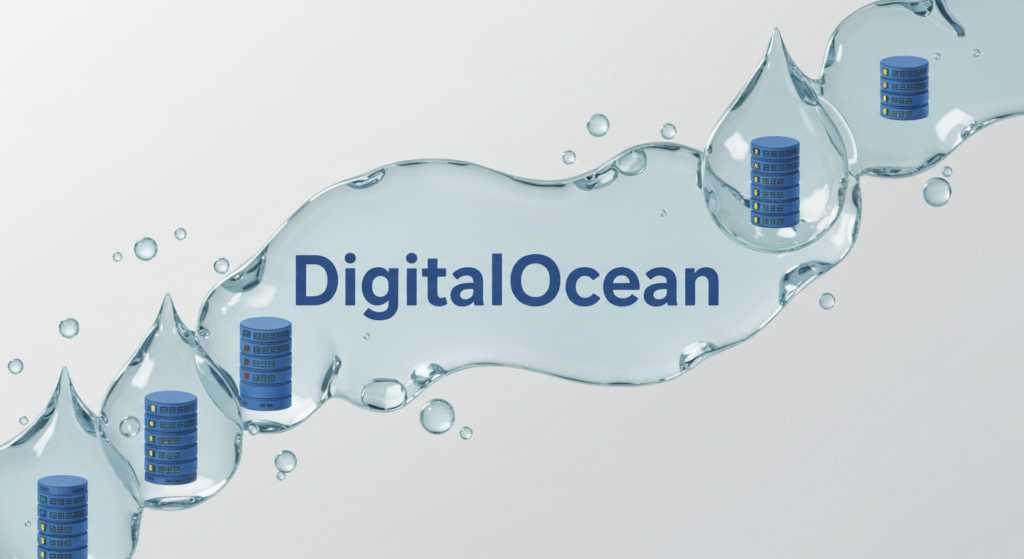Let’s be real—cloud hosting shouldn’t feel like navigating a maze. If you’ve ever gotten lost in AWS’s endless service list or stared at an Azure pricing calculator wondering where your budget disappeared, you’ll appreciate DigitalOcean’s no-nonsense approach.
I’ve been using DigitalOcean for years—first as a solo developer, later at a scaling startup—and it’s consistently been the easiest way to deploy projects fast without getting nickel-and-dimed. But is it right for you? Let’s break it down, minus the marketing fluff.
➡️ Hurry grab the $200 Free Credit Now!
Why DigitalOcean Stands Out in a Sea of Cloud Giants
Most cloud providers seem designed to confuse you into overspending. DigitalOcean flips that script. Here’s the vibe:
You need a server? Spin up a Droplet (their term for a VM) in 55Hands-On With DigitalOcean’s Core Features seconds.
Need a database? One-click setup, no certification required.
Budget? One of my favorite things about DigitalOcean? You won’t get hit with shock bills at the end of the month. Unlike some cloud providers that nickel-and-dime you for every little thing (looking at you, AWS and your mysterious “data transfer fees”), DigitalOcean gives you straightforward monthly pricing. What you see is what you pay – no getting ambushed by unexpected charges for moving your own data around or making too many API calls.
It’s like the IKEA of cloud hosting—functional, affordable, and no assembly nightmares.
Hands-On With DigitalOcean’s Core Features
1. Droplets: Your Instant Cloud Workhorse
Droplets are DigitalOcean’s secret sauce – they’re like your favorite pair of jeans that fit just right from day one. These pre-built Linux VMs boot up faster than you can say ‘sudo apt-get install’ and handle everything from your weekend hack projects to production workloads without breaking a sweat. I’ve deployed hundreds of these over the years, and they’ve never once made me want to throw my laptop out the window – which is more than I can say for some cloud services. I use these for:
Staging environments (clone production in seconds)
Microservices (lightweight, cheap to scale horizontally)
Personal projects (my $6/month Droplet hosts 3 low-traffic sites)
Pro Tip: Always enable backups ($2/month). There’s that heart-stopping moment when your terminal blinks back at you with no error message – just ominous silence – and you realize you just executed that command on the wrong server. Your stomach drops, your palms get clammy, and suddenly you’re wide awake at 2:37 AM trying to remember if you actually set up those backups you kept meaning to configure. Yeah, I’ve been there – twice. The first time was a mistyped DROP TABLE command (thanks, muscle memory). The second? Let’s just say I should never SSH into servers after midnight. DigitalOcean’s backups were literal lifesavers both times – I was back online before my panic attack fully set in.
2. Managed Databases: Worth Every Penny
I resisted these at first (“I can set up PostgreSQL myself!”). Then my startup’s self-managed DB crashed during a product demo.
DigitalOcean’s managed databases:
Auto-patch security updates (no more 3 AM maintenance)
Built-in backups (point-in-time recovery is a lifesaver)
Read replicas with one click (scaling without DevOps drama)
Let’s put this in real-world terms – their managed Postgres database costs about the same as three fancy lattes per month. I know because I checked my bank statement last week and realized I’m spending more on oat milk cappuccinos than I am on keeping our customer data safe and backed up. That’s the kind of pricing that makes sense when you’re bootstrapping a project.
3. App Platform: Heroku But Affordable
If you’ve used Heroku and cried over their pricing changes, DigitalOcean’s App Platform is your ally. Deploy straight from GitHub with:
Automatic HTTPS (no Certbot hassles)
Zero-config scaling (sleeps when idle to save costs)
Free static site hosting (great for JAMstack projects)
Downside: Cold starts can be slow for rarely-used apps.
DigitalOcean vs AWS: A Real-World Comparison
The Good
Pricing Transparency: AWS’s bill looks like a tax audit. DigitalOcean shows costs upfront.
UI That Doesn’t Suck: AWS Console feels like a 2005 enterprise portal. DO’s UI is clean and intuitive.
No Upsell Hell: AWS pushes 20 services when you just need a VM. DO keeps it simple.
The Not-So-Good
Missing Big-Ticket Features: Need AI/ML tools? Stick with AWS.
Support Tiers: Basic support is community-only. Priority support costs extra.
When I Recommend Each:
DigitalOcean: Prototypes, startups, side projects
AWS: Enterprise apps, big data, IoT

Who Actually Benefits From DigitalOcean?
Perfect For:
Indie devs who want to ship fast without infrastructure headaches
Startups burning runway (that $4 Droplet won’t bankrupt you)
Agencies managing client sites (easy to hand off access)
Not Ideal For:
Corporates needing compliance certifications (DO has some, but not as many as Azure)
Windows-centric shops (Linux is DO’s strength)
Getting Started: A Developer’s Cheat Sheet
Claim Your $200 Credit (60-day trial, no card needed)
Deploy a Droplet → Ubuntu + Docker is my go-to stack
Remember when we all used to SSH into servers like it was second nature? I still catch myself automatically typing ssh root@[server-ip] while half-asleep, followed by my muscle-memory reflex – apt update – before I’ve even fully woken up. Some habits never die, even if modern DevOps tools try to make them obsolete.
Install What You Need (Node? PostgreSQL? One-command installs)
Pro Move: Use Spaces for backups—it’s S3-compatible at 1/4 the cost.
The Unfiltered Pros and Cons
👍 Why I Keep Coming Back
“It Just Works” Factor: Fewer late-night server fires
Cost Control: Can’t accidentally spend $10k on unused instances
Community Tutorials: Their docs and guides are shockingly helpful
👎 Where It Frustrates Me
Setting up private networks on DigitalOcean can feel a bit like assembling IKEA furniture without the instructions – you’ll eventually get there, but expect some head-scratching moments along the way. While AWS’s VPC works like a well-oiled machine, DO’s networking requires a few more manual tweaks to get your VLANs talking properly. I’ve lost count of how many times I’ve had to double-check firewall rules because my instances couldn’t see each other.
Limited Regions: Missing some locations (looking at you, Africa)
Final Take: Should You Switch?
If you’re:
Tired of cloud complexity
Bootstrapping a project
Not married to AWS-specific services
DigitalOcean is 100% worth testing. It won’t handle Netflix-level scale, but for 90% of real-world use cases? It delivers.
Try It Free: DigitalOcean’s $200 Credit (disclaimer: I get credits too if you sign up).
Have You Used DigitalOcean?
What’s your experience with DigitalOcean? Let us know in the comments below! 🚀
